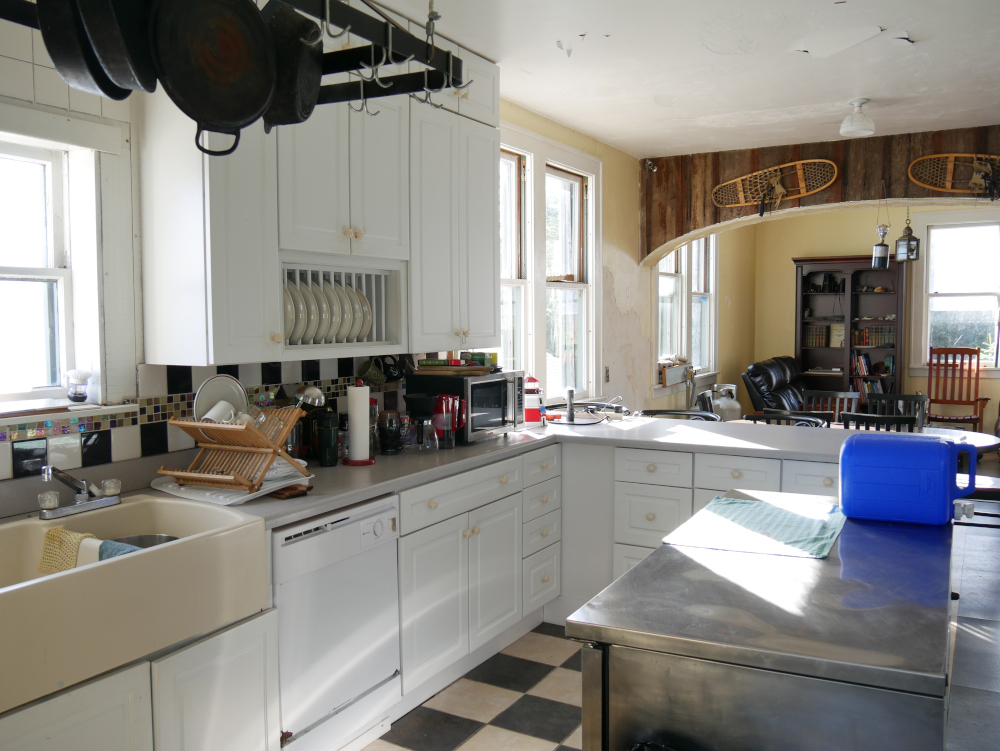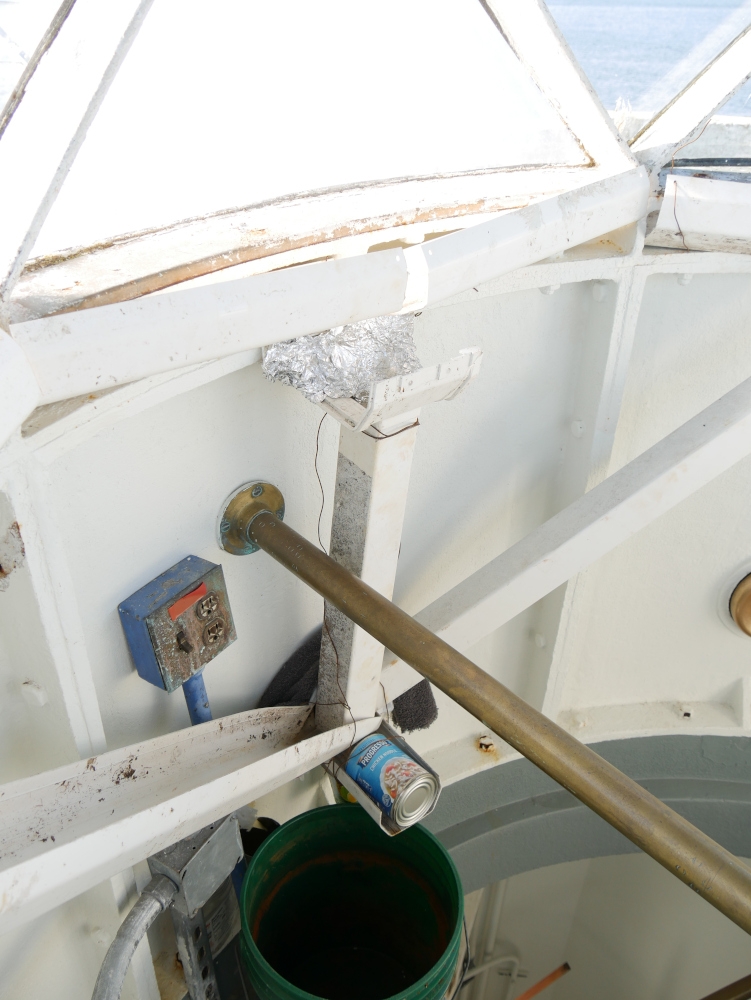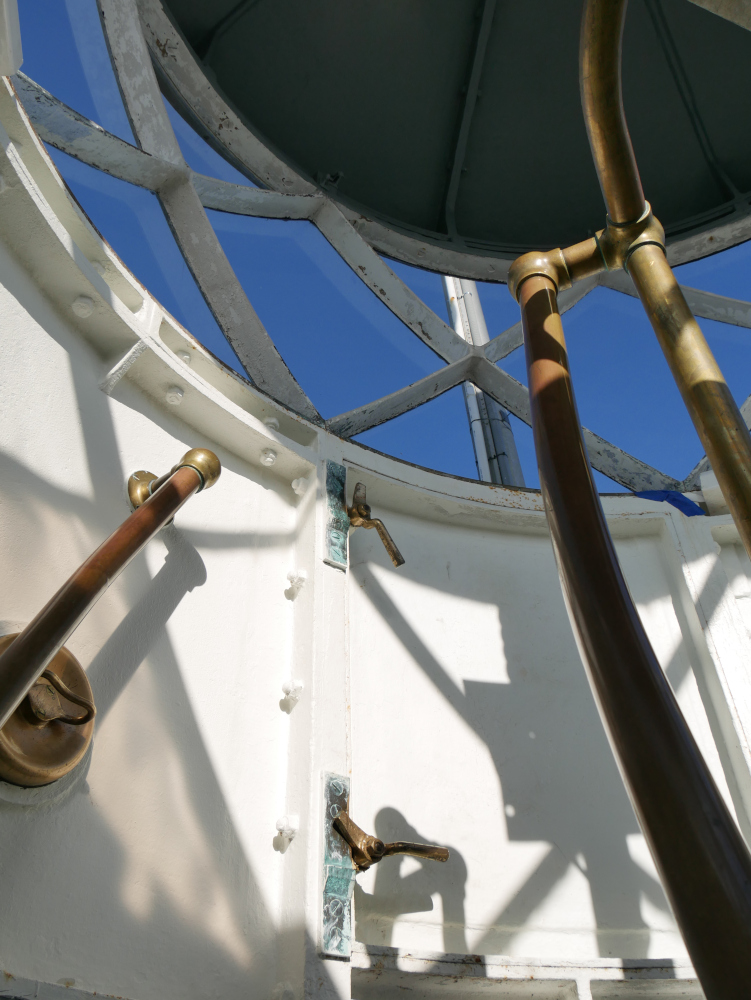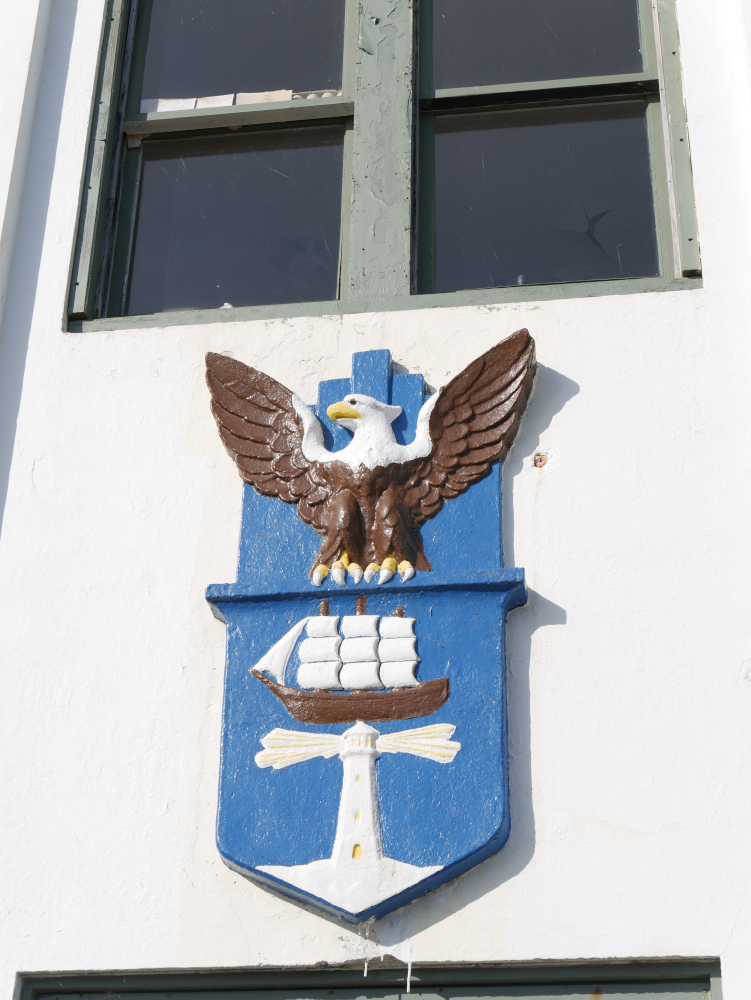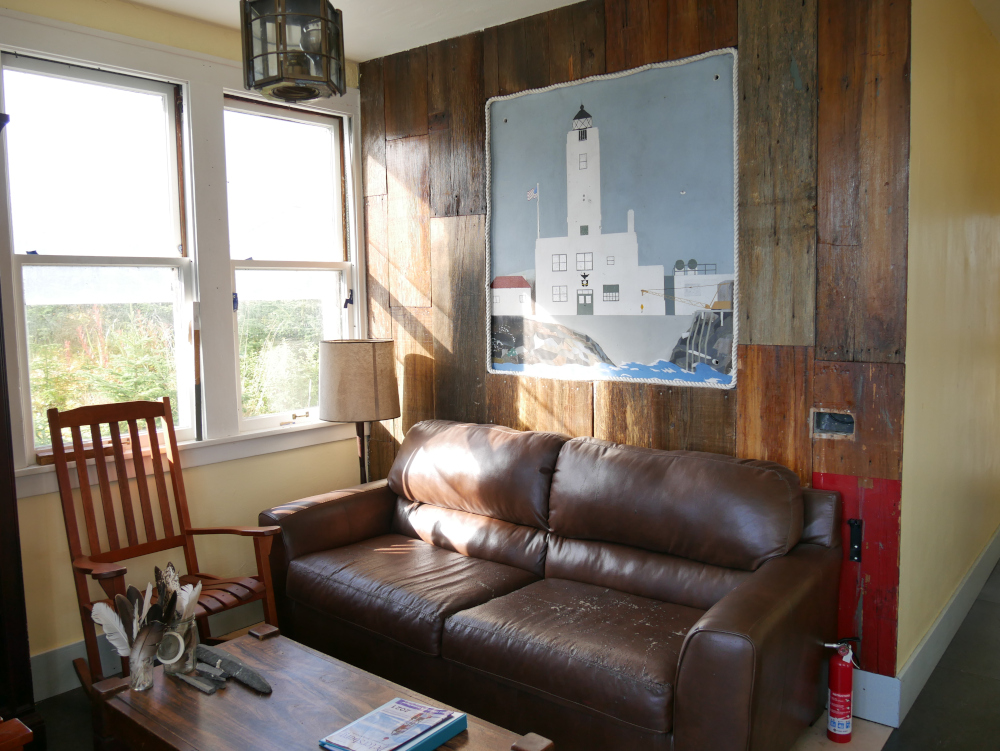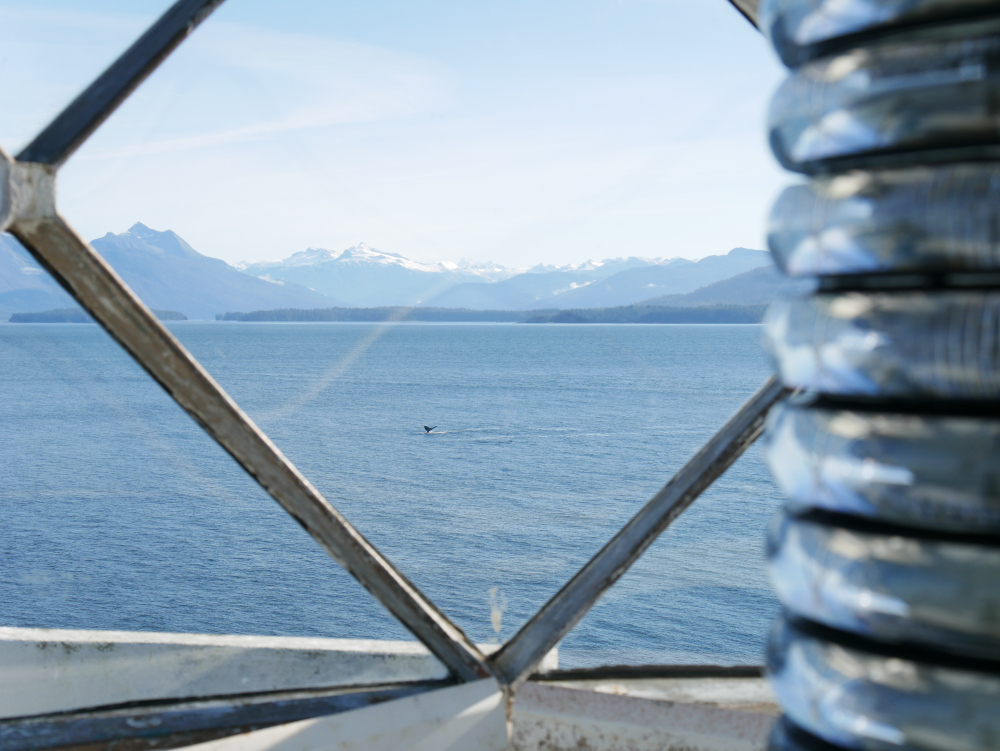
A non-profit that owns and maintains a remote lighthouse north of Petersburg is raising money for that historic property this fall. A group of board members and volunteers made their annual trip this month to button up the buildings for the winter.
It’s a rare blue sky day in between autumn storms of mid-September at Five Finger Lighthouse. A little over 40 miles north of Petersburg, the light endures on a windswept, salt-sprayed rock on the inside passage where Stephen’s Passage meets Frederick Sound. Humpback whales feed offshore, fattening up for the long trip to Hawaii while sandhill cranes have already started their migration south.
Today those aren’t only sounds on the island.
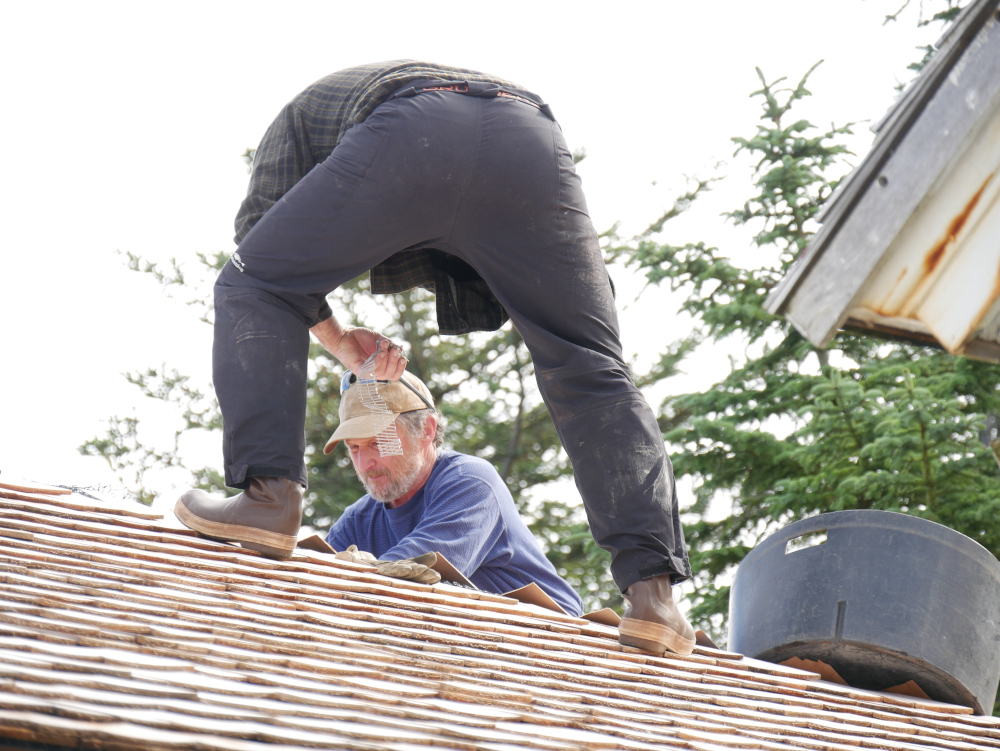
A work party for the Five Finger Lighthouse Society tackles a list of projects, winterizing the building, draining pipes, putting away equipment and buttoning up windows and doors. Interpretive signs along the trails of the small island are stowed away until next year. The society has assumed ownership and maintenance of the light; for years a Juneau-based organization did that work. Now this group of Petersburg residents is putting more shingles on a new roof for the boathouse. The old one blew off last winter. They’re also getting a troublesome generator to run.
“It looks pretty good. The roof project still has a ways to go,” said Josef Quitslund, one of the volunteers. He’s been multiple times to the remote spot.
“Well it’s hard to get here,” Quitslund said. “I’ve only been here on calm days but the really cool thing about it is it’s right in the middle of everything. You know there’s so much life going on around here with whale swimming right along shore and seals and birds all over the place. It has its own unique little biosphere of critters out here.”
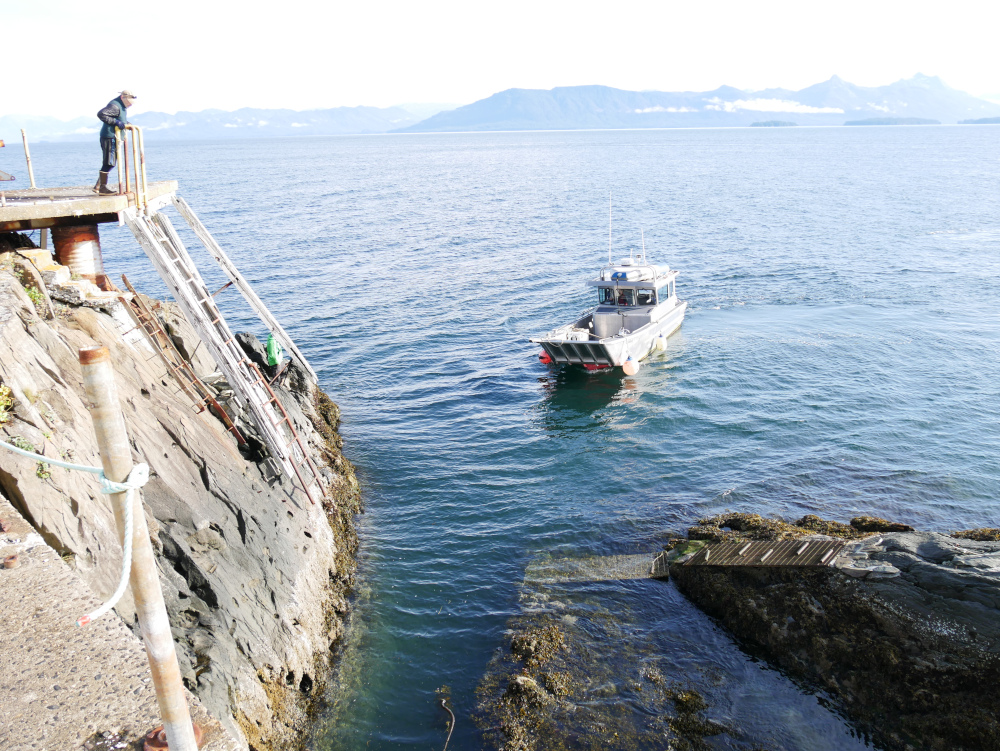
Besides being far from other places, the island is a difficult place to get ashore. Anchoring nearby is difficult. There are a few spots to tie boats up to the rock when the tides and waves cooperate. There’s a rusting ladder up steep rock and rock stairs to an access ramp.
“You can see too there’s been efforts to be able to increase the safety as far as access,” said Eric Castro, a board member of the society. “That’s one of the major challenges that still exists really is accessing the island. So even though there are hundreds of people that pass by, that transit by this island, getting onto the island is one of the major obstacles.”
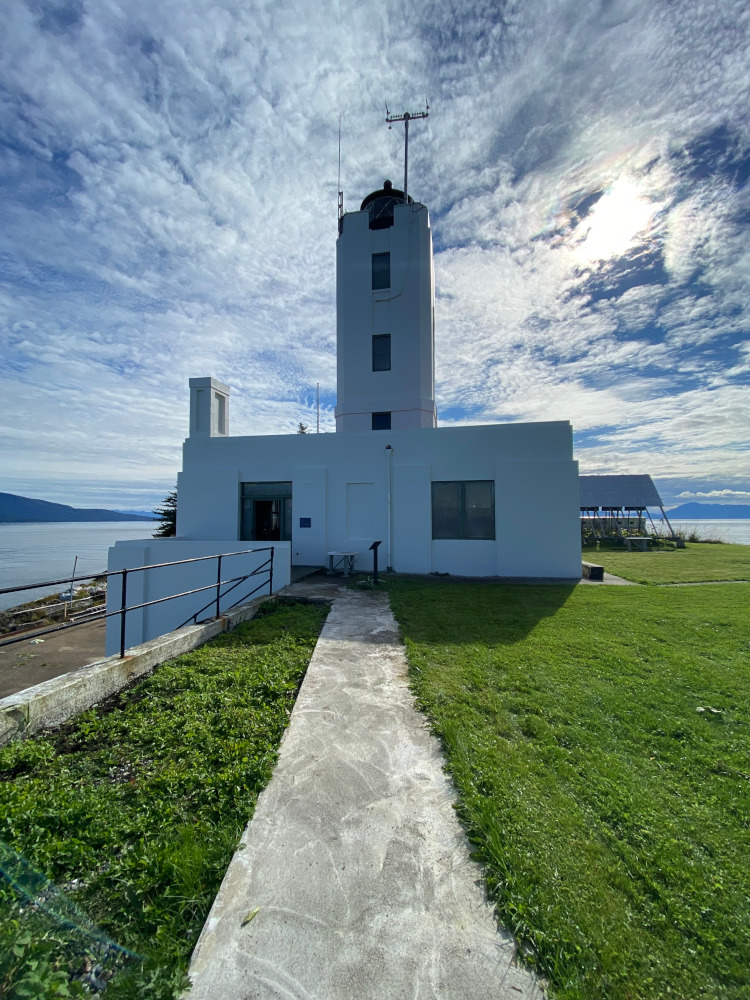
The lighthouse building dates back to 1935, built in the art deco style. It replaced one completed in 1902 that burned to the ground in 1933. The light’s automated now. The last year-round Coast Guard crew to live there left their names in the basement of the building in 1984.
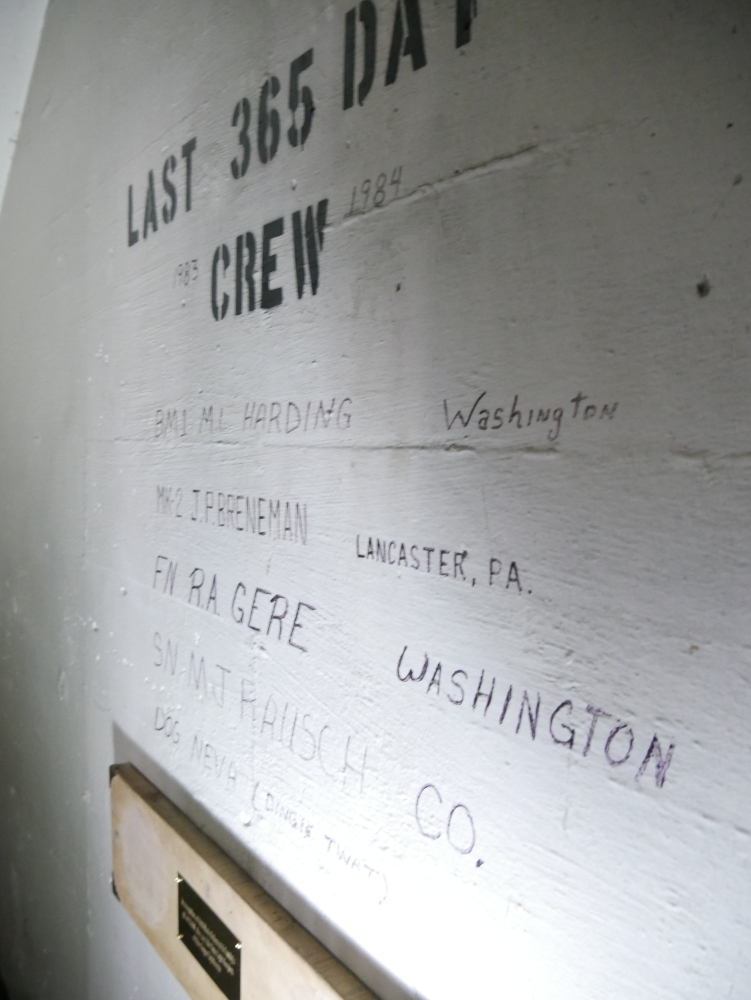
It’s peaceful out here between storms. But the evidence of the harsh conditions is everywhere. The salt air has rusted a horseshoe on the shop building nearly away. Inside the light itself someone’s built a system of indoor gutters to move the constant rain.
Board member Karen Dillman said there’s been a lighthouse keeper onsite for part of the past two summers and the group has someone lined up for part of next year as well. She’s hoping a local fund raising effort will help the society land some grant money.
“I think that’s the main goal is really just tapping into some other grants too that really like catapult the whole process into a whole other realm, just because of the power situation, the solar polar, the access, those are big ticket items, if you want to have more people show up and use it as a retreat,” Dillman said.
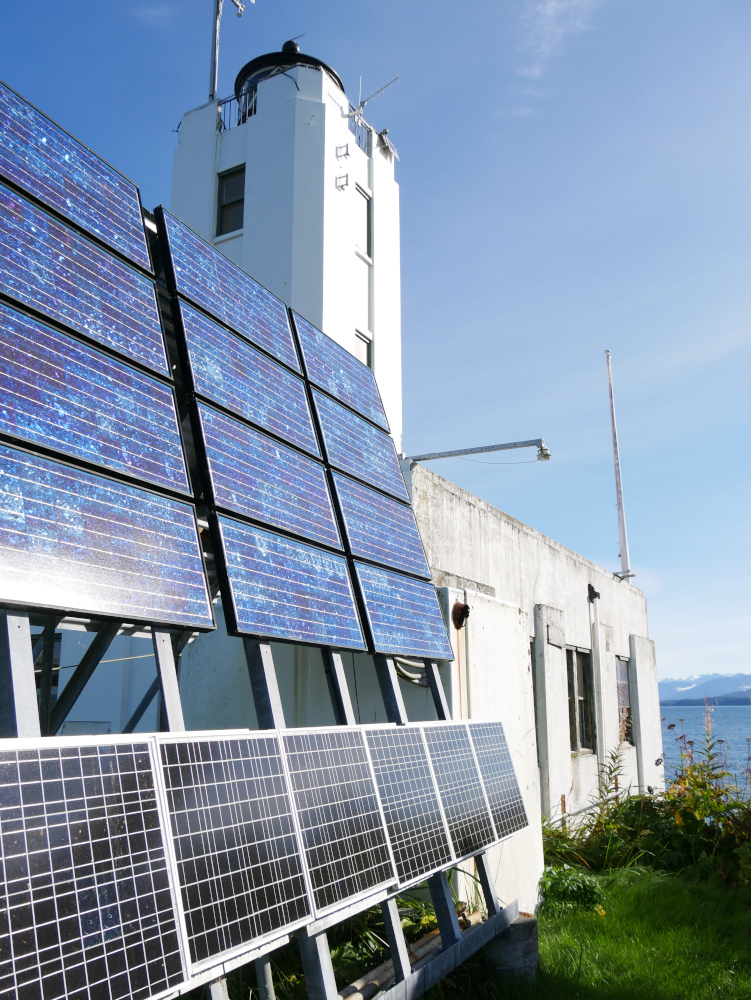
Lighthouse keepers welcome visitors on passing boats while the structure is open, usually at least part of the time between May and September. The light has also housed whale research and even yoga sessions for cruise ship passengers.
The owners hope it could be a destination again.
“You know you have to have the right person, right group of people who can come out here with the knowledge they might be left out here for a week or more at a time due to inclement weather and just the inability to be able to make it off the island. So it takes a certain kind of grit,” Castro said.
“Grit and flexibility, right?,” Dillman adds. “You don’t want to have a plane to catch tomorrow and come out here the day before or something because that could change,” she said.
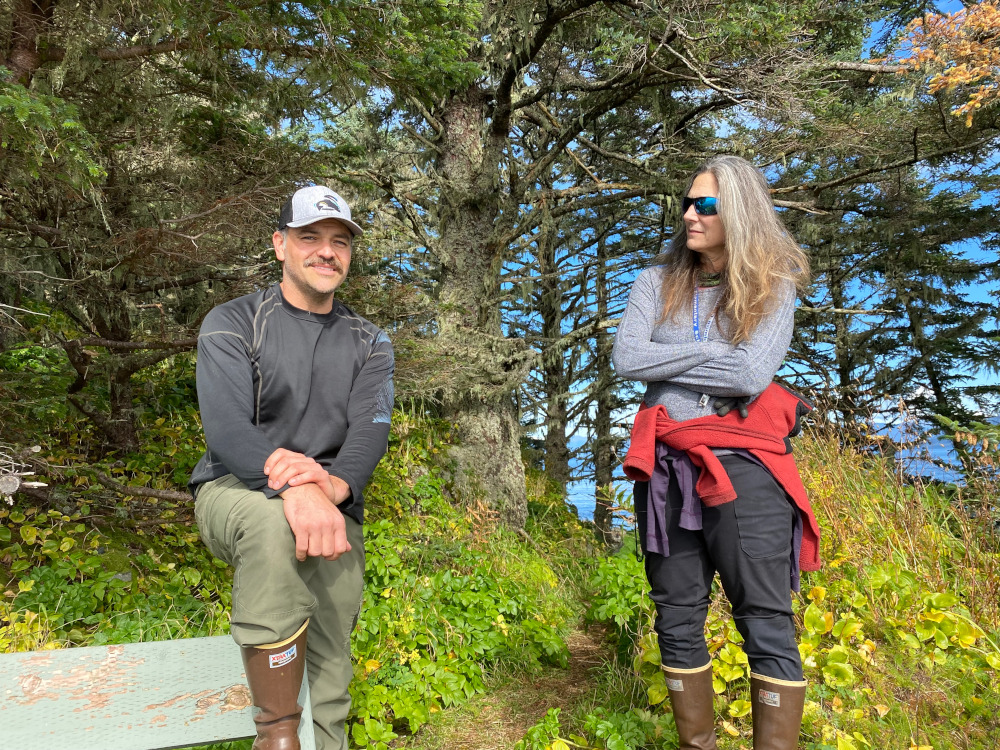
Besides fixing things that break, the society has a list of things that would make the island more livable, like a new bank of batteries to store power from solar panels and a better access ramp.
The society has solicited donations from artists and they have an online auction underway. The society has canceled its in-person auction because of COVID cases. The online auction now has a closing date of October 31. The art works will be on display at the Clausen Museum October 4-15th.
